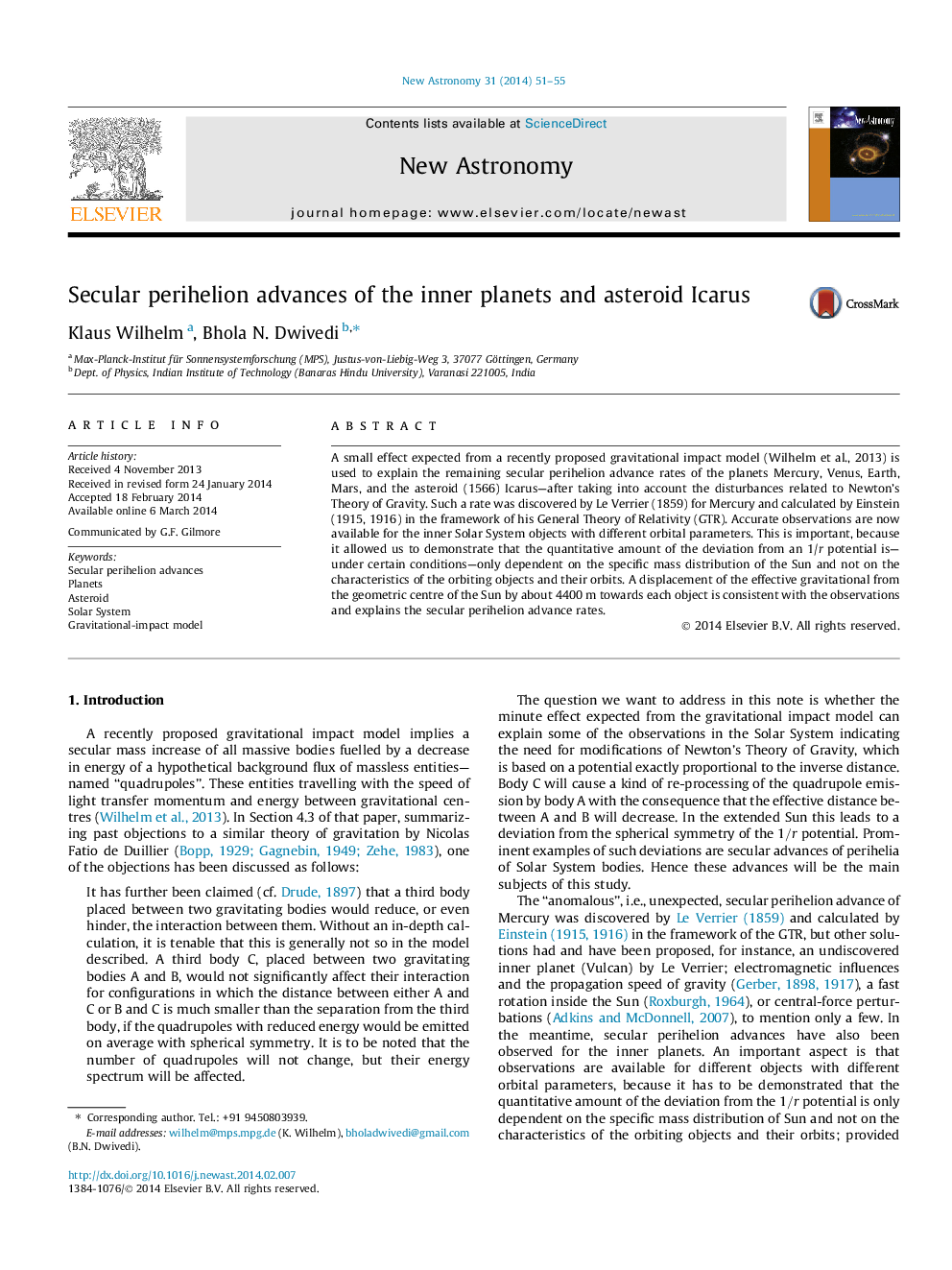| Article ID | Journal | Published Year | Pages | File Type |
|---|---|---|---|---|
| 1778927 | New Astronomy | 2014 | 5 Pages |
A small effect expected from a recently proposed gravitational impact model (Wilhelm et al., 2013) is used to explain the remaining secular perihelion advance rates of the planets Mercury, Venus, Earth, Mars, and the asteroid (1566) Icarus—after taking into account the disturbances related to Newton’s Theory of Gravity. Such a rate was discovered by Le Verrier (1859) for Mercury and calculated by Einstein (1915, 1916) in the framework of his General Theory of Relativity (GTR). Accurate observations are now available for the inner Solar System objects with different orbital parameters. This is important, because it allowed us to demonstrate that the quantitative amount of the deviation from an 1/r potential is—under certain conditions—only dependent on the specific mass distribution of the Sun and not on the characteristics of the orbiting objects and their orbits. A displacement of the effective gravitational from the geometric centre of the Sun by about 4400 m towards each object is consistent with the observations and explains the secular perihelion advance rates.
